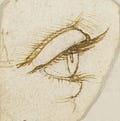Howdy – I'm trying out a new format with the newsletter. Let me know what you think.
An idea from finance
Michael Burry was one of the first investors to predict the subprime mortgage crisis, and he did it by doing what very few were willing to do: he read the boring disclosure documents others wouldn’t.
In 2004, he started reading the detailed prospectuses that described the subprime mortgage bonds the big banks were selling. He discovered the loans underpinning each bond were crap.
The rating agencies and banks selling them had claimed these bundles of mortgages were low-risk, as if stuffing enough turds into a trash bag eventually yields a sack of gold.
Another investor Steve Eisman also suspected something was off. His team flew down to Florida to meet lenders and home buyers for themselves. They discovered abandoned houses, minimum-wage workers with seven homes, and mortgage brokers gleefully earning commissions lending to anyone who walked into their office.
It was clear the entire thing would blow up.
From the movie The Big Short:
“These outsiders saw the giant lie at the heart of the economy, and they saw it by doing something the rest of the suckers never thought to do: They looked.”
An idea from painting
In his notebooks, Leonardo Da Vinci wrote that the eye was “the principal means by which the central sense can most completely and abundantly appreciate the infinite works of nature.”
His notebooks are filled with explanations of how to paint all sorts of things. In describing how to draw the aftermath of a storm, for example, he included painstaking detail he learned through direct observation:
“Lay bare the twisted and gnarled roots of large trees overthrowing their roots upwards.”
“Let the mountains, as they are scoured bare, discover the profound fissures made in them by ancient earthquakes.”
For him, painting didn’t start with stroking a brush; it started with opening the eyes.
An idea from Edgar Allen Poe
In 1845, Edgar Allen Poe wrote a short story about a naive traveler visiting a mental institution.
The traveler was told the institution had invented a radical new cure for mental illness but, upon arriving, his host tells him they recently stopped practicing their famous technique.
The traveler is confused. Everyone in the medical community had told him this place was at the frontier of medicine.
His host replies:
“The time will arrive when you will learn to judge for yourself of what is going on in the world, without trusting to the gossip of others. Believe nothing you hear, and only one half that you see.”
The traveler shakes off his naive assumptions and looks more closely at his surroundings. He notices something: all of the staff seem off. Slowly, it dawns on him. The patients have taken over the asylum.
Tying it together
To discover how things actually work, we can’t always take someone else’s word for it. We have to look.
—
Sources: Da Vinci's Notebooks, The System of Dr. Tarr and Prof. Fether by Edgar Allen Poe, The Big Short, and Betting on the Blindside (Vanity Fair)
—
See you next week,
Stew


Brilliant! Love this format. Three stories to illustrate an insight all wrapped up in one overarching lesson. Now I want to know the process behind finding those stories and connecting the dots!
Liking the format - curious to see how it will evolve. Short bites are appealing, especially in the summer. Da Vinci's perspective is invaluable, no matter for verbal or visionary story telling.